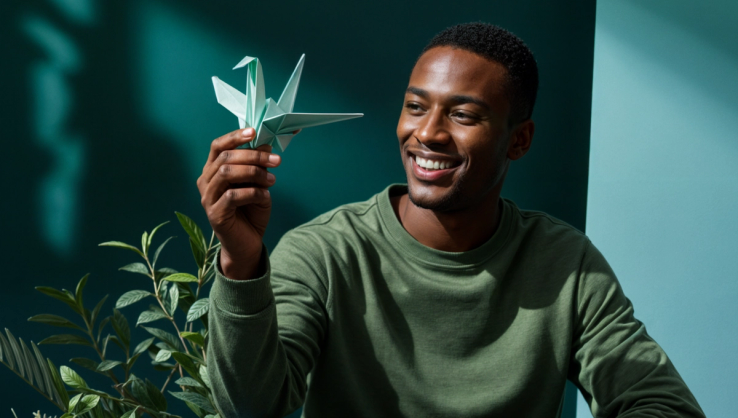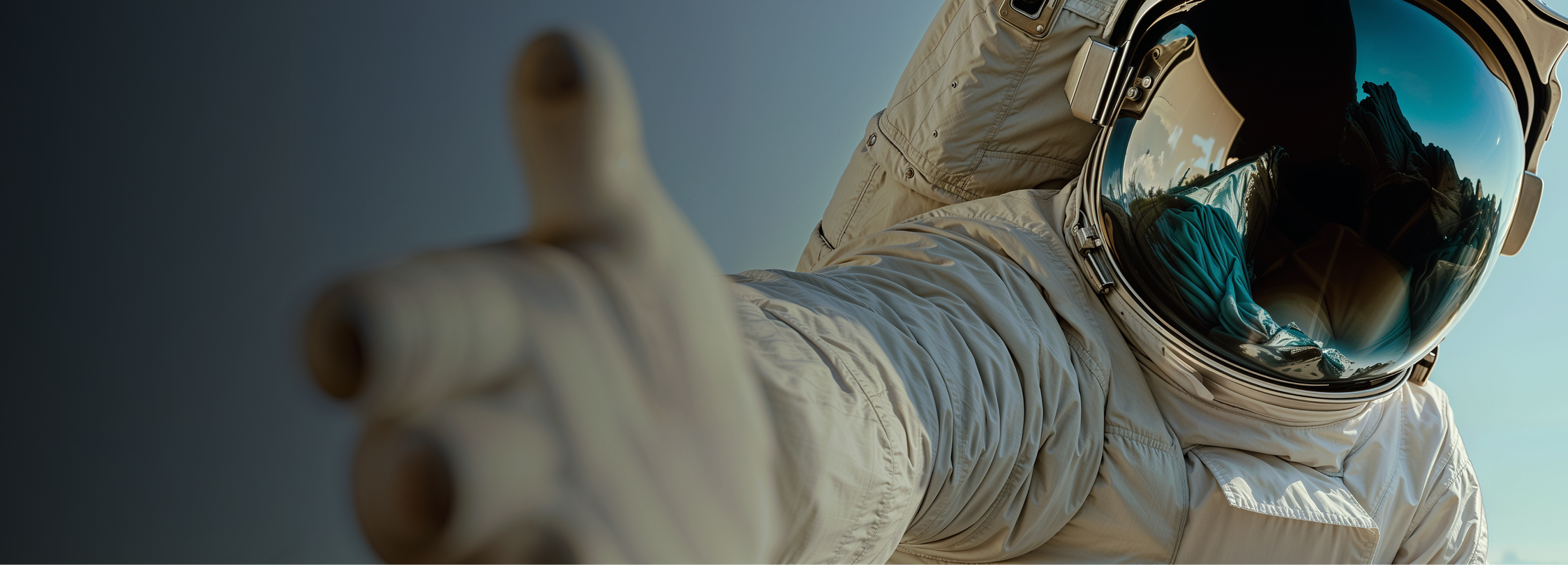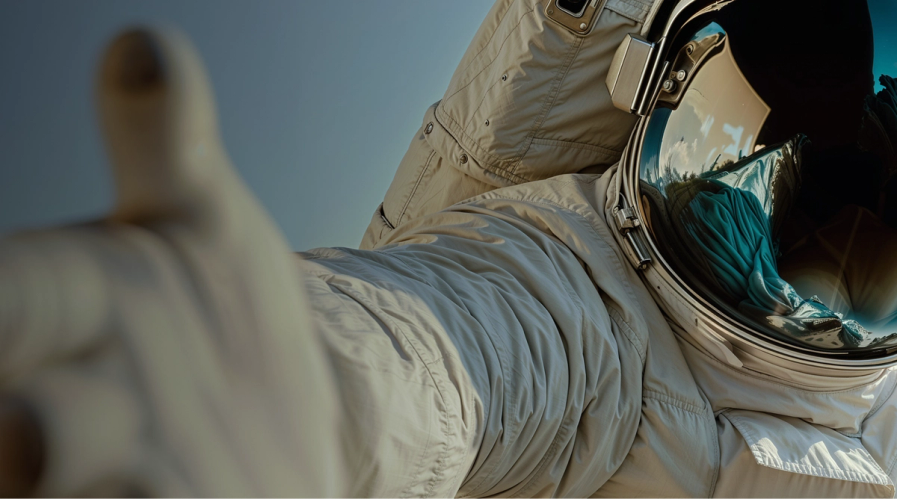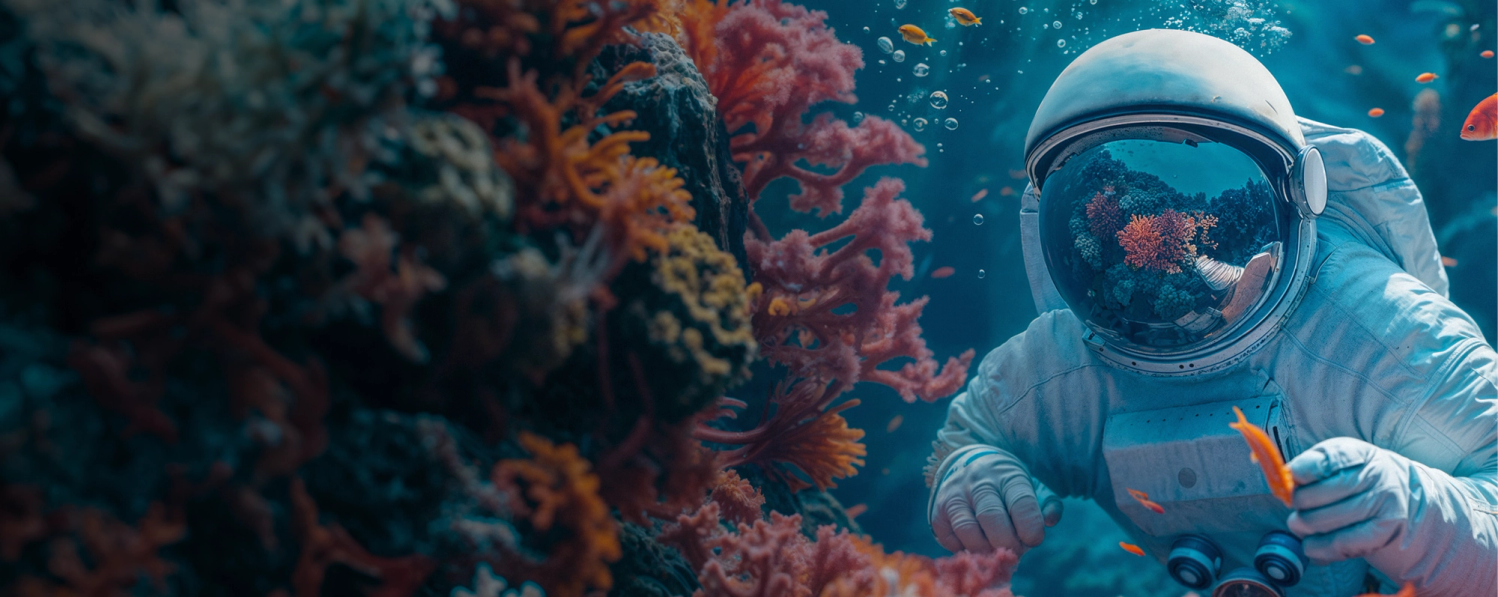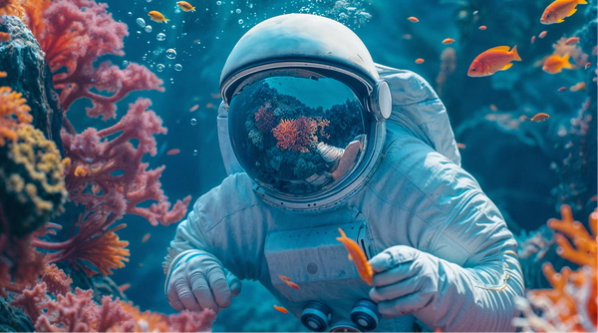
10 Best AI Design Tools Curated by Superside’s Experts
Published 9 Feb, 2024
By incorporating AI into creative workflow, Superside has saved clients almost $300K across 200 projects in three months. How did we do it? Our creative team has been busy researching, experimenting and refining the use of the best AI design tools. And now, they’re sharing their top 10 picks with insights to help you reap the benefits of these tools in your creative workflows, too.
Golfers have caddies. Celebrities have assistants. Chefs have sous chefs. And creatives now have artificial intelligence.
Creatives use AI design tools like Midjourney and ChatGPT to save time on repetitive tasks, allowing more time for what really matters: The big picture.
As Manuel Berbin, Senior Illustrator and AI Creative Lead at Superside, explains, “The best thing we [creatives] can do is always keep in mind how our work is telling a story. Technical skill is important but storytelling is distinctly human. That is the true value of your work as a creative: How it fits a larger narrative, and fits together to tell a story.”
AI can’t tell those stories. But it can help designers deliver the highest quality work, on the double. So, what are the best AI design tools you should use? Discover the top 10 tools Superside’s AI-enhanced creative team leverages to speed up their workflows by 30-60%.
How to Use AI Tools in Your Design Processes
Before we dig into AI design tools, some context. It’s important to remember an AI design tool is just that: A single tool in a creative’s repertoire.
AI is like a very cool screwdriver that does one thing really well, but it doesn’t do everything well. It doesn’t have a good eye for design or storytelling. People think you get a very detailed image with two clicks but are you telling a story with that image? Are you solving an issue? Is it part of a bigger narrative? That job needs to be done by humans.
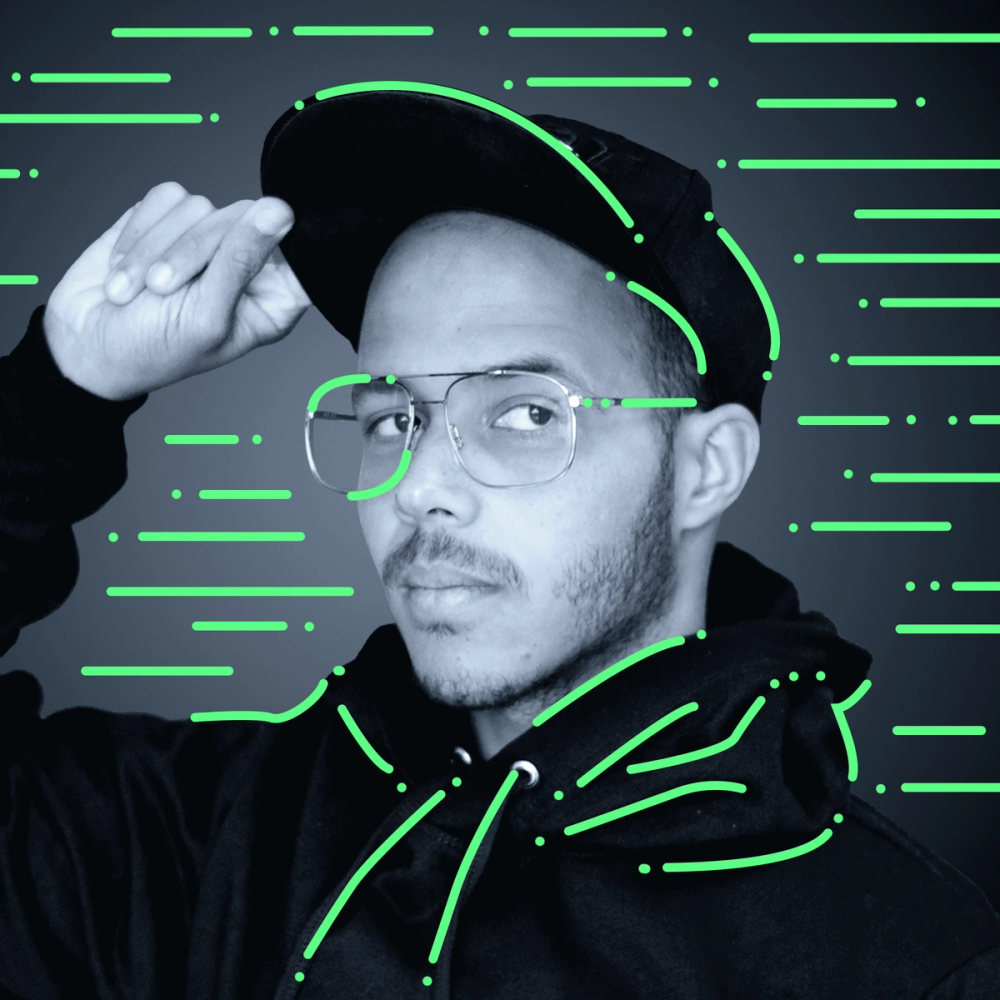
While true creativity will always be a human job, there are many ways the Superside creative team uses AI in design to enhance their work. Here are the top three to inspire your own use of AI design tools for professionals:
Efficient brand organization
While the Superside team also uses specialized tools for client management, one area AI helps with is quickly and easily organizing large amounts of brand data within private, custom-trained AI models—essentially a brand database.
Superside customers have dedicated teams who know their brand inside and out, but these models help rapidly onboard new team members when necessary. Supersiders can ask the AI a question about the customer's brand and, thanks to the previous training and documentation, get an instant answer.
Of course, true brand familiarity requires more than simple questions and answers and builds over time through partnership. But these models save time on admin work or tasks like drafting brand-specific prompts, and that time can be put towards more creative work.
Additionally, when a customer has an ongoing, high-demand need for AI-enhanced creative, we train a brand-specific AI model in Stable Diffusion to rapidly scale up production while delivering consistently on-brand, high-quality assets.
Generating and enhancing images
AI design tools are more than the commonly thought of “text-to-image” generation apps like Midjourney or DALL-E. These have their place in the ideation and concepting phases for some Superside creatives, but they don’t produce an end product for commercial client work.
Some more subtle, but extremely time-saving ways of using AI in design work is to complete image editing tasks, remove unwanted elements or retouch and enhance photos, add details or effects to hand-crafted illustrations, and other tasks that previously took hours upon hours on a creative journey.
By automating some of these tasks, creatives can focus on the parts of their work that can never be automated with the machine learning algorithms of these tools: Their own technical mastery and innovation.
Developing concepts
As Berbin puts it:
The most important part of the creative process is why? Why are we doing this? Most people jump into how to do something, or just doing it. But why? What is the story of this? How does this [asset] fit into the solution? AI generated images can never replace that. It can generate assets. Someone has to assemble those pieces into a narrative.

Developing that narrative and the why behind the work is where Superside creatives shine. Meanwhile, using AI design tools like Midjourney to generate concept variations or explore ideas allows them to spend more time refining the story, and ultimately, more time developing the final creative work without losing detail and effectiveness.
10 Best AI Design Tools to Enhance Your Workflows
Whether you're a graphic designer seeking to leverage the machine learning abilities of artificial intelligence tools in your designs or a seasoned creative professional aiming to scale up and generate designs with AI, I've got you covered. Here are the top 10 AI graphic design tools that will become your most invaluable asset in the creative process.
1. Midjourney
Source: Midjourney app on Discord
Midjourney is a prompt-based, text-to-image generator AI design tool, mainly used for generating images, that runs on a Discord server. If you’ve used Discord before, it’s super easy to get started with Midjourney thanks to its intuitive interface. If not, there’s a bit of a learning curve for how Discord works but both Discord and Midjourney have detailed help guides to get even newbies creating quickly.
To create an image, you enter into a chat with the Midjourney bot and write a prompt starting with “/imagine” and then what you want. You can write this straight from your head and Midjourney will probably produce something close to what you want. But for the best results, spend time learning how to write effective Midjourney prompts.
You can also work specific instructions into a prompt. For example, you can specify an image’s aspect ratio, background color, art style and more. Right now, it’s possible for graphic designers to create photorealistic images by using the right prompt. According to Phillip Maggs, Superside’s Creative Director of New Horizons, Midjourney is currently the “swiss-army knife” of AI design tools, offering both speed and flexibility for creative professionals.
Midjourney’s best features:
- The Discord-based app is easy to use. Thanks to its intuitive UI, with just a few clicks, you can create icons, realistic images, stunning visuals and anything else you might need in your creative projects.
- In addition to generating images, you can customize them with white backgrounds, many art styles from photography to classic painting, specific aspect ratios and more.
Midjourney’s pricing:
- Basic: $10/month for up to 200 image generations and general commercial use.
- Standard: $30/month for unlimited generations and 15 fast hours.
- Pro: $60/month for unlimited generations, 30 fast hours, and stealth mode (your generations do not show up in user gallery online).
- Mega: $120/month for all of the above with 60 fast hours above with 60 fast hours.
2. Runway
Source: Runway
Runway is a text-to-video generative AI graphic design tool where you can create video assets from nothing but text. Runway can also create AI-generated images from text prompts, clean up audio, enhance existing video content and existing designs, and even generate caption transcripts.
In sum, Runway can do everything from create video out of thin air to enhancing your existing videos and images, as well as generating AI-voiced audio. It’s like a mini video production studio living on your computer.
Runway’s best features:
- Text-to-video… this is it, we’re in the future thanks to AI-powered tools! Wild!
- Easily remove backgrounds to videos without a green screen, which is perfect for creating social media shorts.
Runway pricing:
- Free: 125 total credits (then must buy a paid subscription).
- Standard: $15 per user/month for 625 monthly credits (about 125 images or 125 seconds of video) and other advanced AI features.
- Pro: $35 per user/month for 2250 monthly credits (~450 images and ~450 seconds of video), unlimited video projects, 500GB storage, ProRes exports and more.
- Unlimited: $95 per user/month for unlimited generations and all Pro features.
3. ChatGPT
Source: ChatGPT
ChatGPT is a household name nowadays, best known as a generative text AI technology for producing content like blog posts, social media captions, outline ideas and being able to research and answer any question. (Although not without incorporating bias and potential misinformation—always fact-check answers ChatGPT gives you!)
The key features of this AI tool are widely used by content marketers, web designers and different types of professional designers across all industries. You can ask ChatGPT almost anything and it’ll either write you some content or give you some inspiration to work with. But again, for the best results, you’ll want to refine your ChatGPT prompting skills. Many Superside creatives use ChatGPT as a sounding board for new ideas and to get the ball rolling on projects.
I use ChatGPT as a little person I can bounce my ideas off. And nearly always that unlocks something for me.
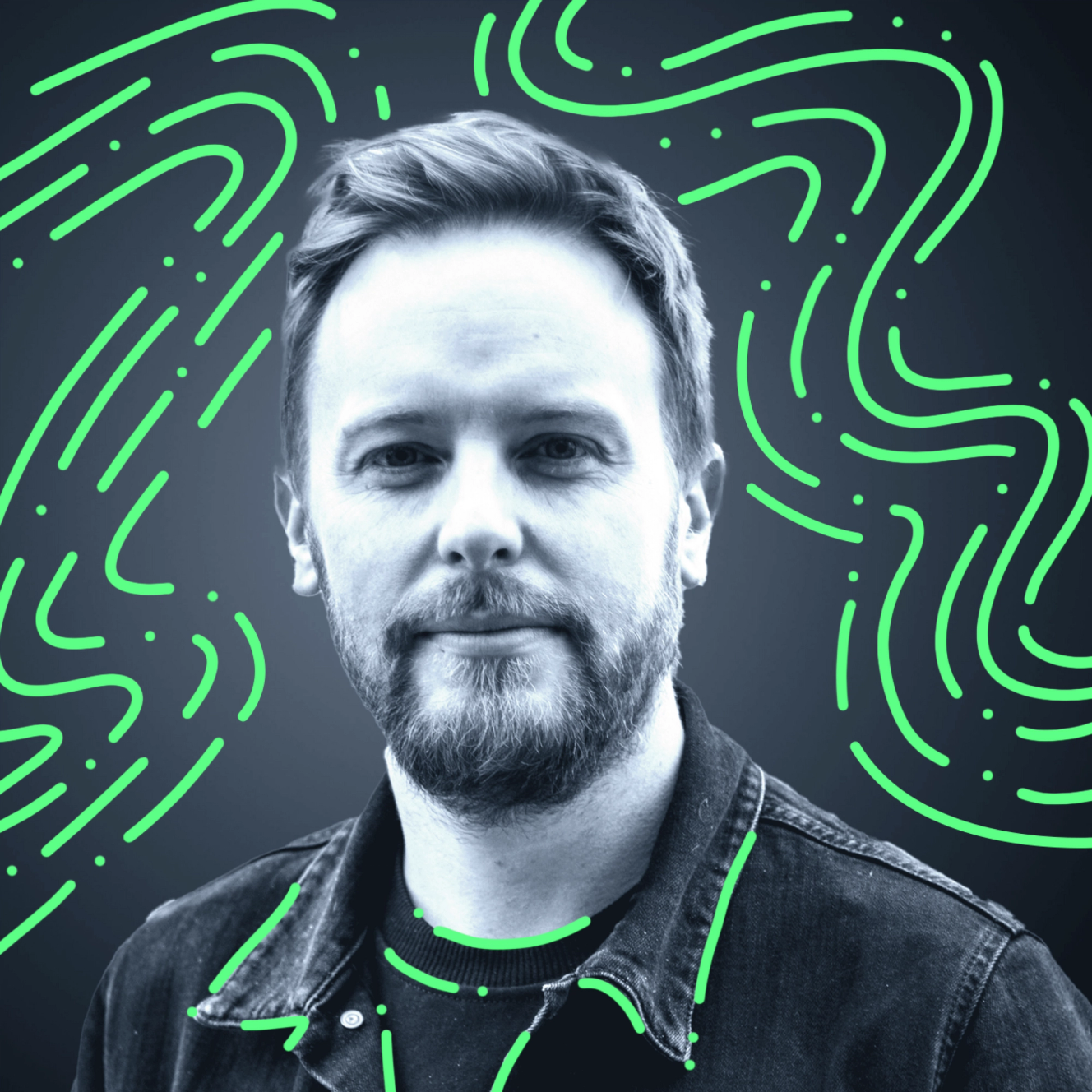
ChatGPT’s best features:
- Excellent for beating “blank page syndrome” by giving you something to start working from.
- Get instant output of outline or concept ideas, research help and more.
- In addition to generating custom images, you can also upload images to ChatGPT, allowing you to utilize its extensive toolkit with existing images at your disposal.
- Note: Although ChatGPT has a completely free version, the only way to access its vast collection of design tools is to pay $20 a month for a ChatGPT Plus subscription.
ChatGPT pricing:
- ChatGPT-3.5, the previous release, is free to use.
- ChatGPT-4, the latest model which also includes DALL-E, is $20/month.
- Teams get ChatGPT-4 with advanced analytics and your own workspace for $25 per user/month.
4. Adobe Firefly
Source: Adobe
Adobe Firefly is another generative image AI design tool using text prompts, although it also features Adobe’s shockingly good generative fill tool. With generative fill, you select an area of an existing photo or graphic and describe what you want to change. For example, change a track jacket to a denim jacket, remove a background element or person, or add in a tree, piece of furniture, or anything else you can imagine.
Adobe Firefly’s best features:
- Simple to use for beginners with prompt “add-ons” that are easy to select from a menu.
- Adobe Firefly is the company’s innovative tool, available within Adobe desktop software. It enables users to upscale images, experiment with various logo options, generate visuals in multiple formats and explore diverse color combinations.
- Image expansion and generative fill options produce realistic results.
Adobe Firefly pricing:
- Free: Get 25 monthly generated images.
- Premium: $4.99/month for 100 monthly images.
- Access to Adobe Firefly and monthly credits is also included in Creative Cloud subscription plans.
5. Adobe Photoshop
Though approaching its 33rd birthday this year, Adobe Photoshop remains a staple in the design world for good reason: It has always been best-in-class and the latest update includes AI design features, like generative fill (pictured above on one of my photos), expanding backgrounds, object removal and more.
All of Photoshop’s new AI powers come from the previously mentioned Adobe Firefly engine driving it all. Like peanut butter and jelly, Photoshop and Firefly come together to make a powerfully good AI design sandwich.
Adobe Photoshop’s best features:
- A do-it-all industry behemoth, now with modern AI features. It’s used by web designers in UX design and graphic designers for print or digital media (among other creative professionals).
- Generative expand: Make an image larger or change its aspect ratio by generating additional background content that looks seamless with the original.
Adobe Photoshop pricing:
- Adobe Photography plan: $19.99/month for Photoshop and Lightroom, aimed at photographers.
- Creative Cloud subscription: Access all Adobe apps for $59.99/month.
6. Vectorizer AI
Source: Vectorizer AI
Vectorizer AI is a quick online tool for converting a standard (bitmap format) PNG or JPG image into an SVG vector image. Vector images are useful because they look the same at any size, scaled up or down. For example, you can print anything from a giant billboard to a tiny postcard from the same image and both will look crisp and sharp.
This is a highly useful tool for all types of designers, especially illustrators and graphic artists who wish to generate multiple logo options. Easily scale up your work for any application without tedious manual redrawing or image tracing, which can take hours.
Vectorizer AI’s best features:
- Vectorize simple, shape-based graphics within a user-friendly interface.
- Scale up existing raster (non-vector) artwork to print at larger sizes.
Vectorizer AI pricing:
- Free to use in beta mode.
- $9.99/month for unlimited web images.
7. DreamStudio
Source: DreamStudio
DreamStudio is another text-to-image generative AI app (similar to Midjourney), which runs as a web app. Even those unfamiliar with AI design tools can immediately make sense of the easy-to-use interface to create either completely new images based on prompts, or upload an existing image they want to model something after or create variations from.
It’s a decent tool for generating ideas or developing concepts. It does have that “AI look” to the generated images, like other tools. (I mean, check out that paw dexterity.) But according to Berbin, it is one of the best options for following the prompt it’s given.
Source: DreamStudio
DreamStudio’s best features:
- Generate concept artwork or elements for free to start.
- Experiment with AI design tools without committing to a paid plan.
DreamStudio pricing:
- You get 25 credits upon signup, which will net about 125 generated images
- Additional credits are available to purchase
8. DALL-E
Source: OpenAI
DALL-E 3 from OpenAI is part of ChatGPT and only included within paid plans using ChatGPT-4, instead of the free ChatGPT 3.5 model. However, you can still try out DALL-E for free using the previous model, DALL-E 2.
While DALL-E 3 is more advanced and capable of producing more accurate, detailed images, both models can be used to generate concept ideas, refine variations, get inspiration, or explore colors and ideas.
DALL-E’s best features:
- Conveniently included with ChatGPT, one of the most popular AI tools out there.
- DALL-E 3 excels at creating specific, detailed objects.
DALL-E pricing:
- Use DALL-E 2 as needed by purchasing credits, starting at $15 for 115 credits.
- Get DALL-E 3 included with your ChatGPT-4 Plus subscription for $20/month, or Team subscription for $25/month per user.
9. Magnific AI
Source: Magnific AI
Magnific is for upscaling and enhancing your existing work, from photographs to digital illustrations, paintings and more. Beyond upscaling the size and clarity of your work, Magnific can also transform it with text-based prompts. Think of Magnific as a last step of refinement. You could choose to add more depth and clarity to photographs or additional drawn details in an illustration, for example.
Magnific AI’s best features:
- For specific use cases, Magnific can efficiently add very realistic looking details to illustrations.
- Can enhance traditionally “AI-looking” generated photographs to appear highly realistic.
Magnific AI pricing:
- Pro: $39/month for approximately 200 normal upscales and 100 large upscales.
- Premium: $99/month for approximately 550 normal upscales and 250 large upscales.
- Enterprise: $299/month for approximately 1,600 normal upscales and 800 large upscales.
10. Krea
Source: Krea
Krea offers a collection of impressive AI tools for designers, including text-to-image generation, upscaling and detail enhancing, animations, pattern creation and more.
Interestingly, Krea goes beyond typical text-to-image generators by also offering “image-to-image” generation. You upload an image representing the sort of tones, layout or other inspiration you want, plus a text prompt, and Krea uses these inputs to generate its final composition. You can also upload an image then add shapes and other elements within Krea’s web-based editor to achieve the same results.
Source: Krea
Krea’s best features:
- Ability to influence composition and mood with inspiration images and elements in Krea’s unique editor.
- Suite of tools in one app, from generation to upscaling, animations and more.
Krea pricing:
- Free: Get 50 image generations per day and the ability to train three custom AIs (free registration required).
- Pro: $30/month for unlimited image and video generations, 5 custom AI training models per month, commercial use license, private gallery and more.
Add Superside to Your AI Design Toolkit
With new AI design tools and updates popping up daily, it can feel overwhelming to stay on top of the latest advancements in this field.
Other relevant tools, such as Canva with its Magic Edit Tool and Khroma with its AI Color tool, are emerging daily. The crucial aspect is to ride the wave of AI and learn how to integrate it into creative teams and workflows.
Superside’s got your back. Our AI-enhanced creative team does the heavy lifting for you, researching, experimenting and refining the use of AI design tools in creative workflows. As Maggs puts it:
The AI domain is the Wild West. There’s new tech every day. That’s a lot to stay on top of. We make that easy for our customers.

Plus, Superside’s creatives represent the top 1% of talent worldwide. You can’t get that from AI. But combining our top talent with the efficiency of AI? It’s almost an unfair advantage, really.
Our creatives use AI design tools to strategically co-create assets if and when they serve to enhance your brand and reputation—not just for the sake of saving a few minutes. So, if you need help scaling high-quality design, you’ve got our number.
Supercharge Your Creativity With AI Design Tools
The moral of the story?
By saving time in the production process, kickstarting ideation and organizing workflows, AI design tools can give you a definite advantage in today’s fast-paced digital world. Just remember, these tools don’t replace human creativity, they enhance it.
[We] don’t use AI to create a lot of things faster without knowing what we’re saying. During the Industrial Revolution, you could buy a spoon making machine to make thousands of spoons a day, but people still went out of business because they didn’t have the concept of a brand: A reason why someone would invest in your spoon.

In other words, there is no spoon… without you. 😉
Michelle is a SaaS expert who loves digging into the technical side of creativity. She’s worn many hats during her decade in agencies, from project manager to brand strategist, copywriter and social media strategist, and worked across a wide variety of clients (though tech is her jam!). She loves to put the sass into SaaS content… and now CaaS. Connect with her on LinkedIn and send her a pic of your dog (really, she’ll love it).






